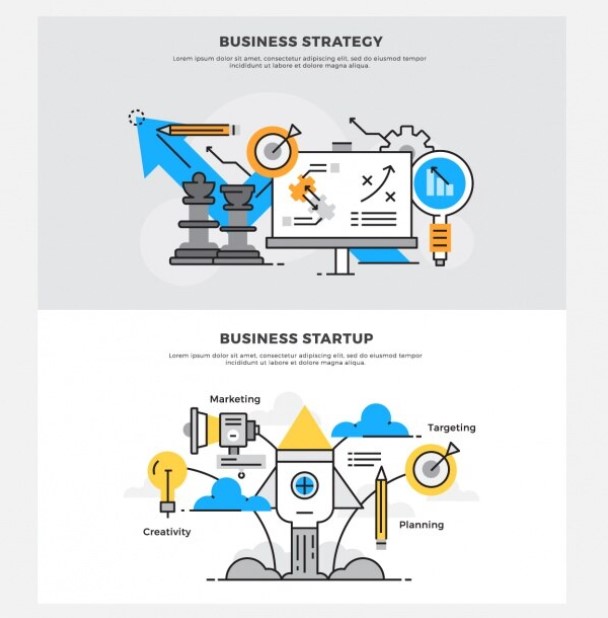Marketing to other businesses can be tricky, especially in the fleet industry. But with the right approach, you can boost your visibility and grow your customer base. The B2B fleet market is competitive, with companies constantly vying for attention from fleet managers and decision-makers. To stand out, you need a mix of traditional and digital marketing strategies tailored to the unique needs of the industry and modern taxi software solutions.
Whether you’re a startup looking to make your mark or an established trucking company aiming to expand your reach, effective marketing is key to your success. Let’s explore five effective marketing strategies for B2B fleet companies, along with some additional tips to help you succeed.
1. Content Marketing: Educate and Engage
Content marketing is a powerful strategy for B2B fleet companies. By creating valuable and informative content, you can position your business as an industry leader and build trust with potential clients.
Start by launching a blog on your website and consistently publishing articles about fleet management, industry trends, and solutions to common challenges. This helps attract customers who are actively searching for information related to your services.
Here are some content ideas you could explore:
- How to reduce fuel costs for large fleets
- The advantages of GPS tracking for fleet management
- Tips for improving driver safety and minimizing accidents
Don’t forget to incorporate industry-specific keywords into your posts. This will improve your search engine rankings and make it easier for potential clients to find your content when they’re looking for solutions.
2. LinkedIn Marketing: Connect with Decision-Makers
LinkedIn is a goldmine for B2B marketing, particularly when you’re targeting fleet managers and company executives. Create a robust company profile for your fleet services and encourage your team members to actively engage on the platform.
Share your blog articles, industry news, and company updates on LinkedIn to keep your audience informed. Engage with other professionals in your sector by commenting on their posts and joining relevant industry groups.
To boost your reach, consider using LinkedIn’s paid advertising options. Sponsored content and InMail can be effective tools for reaching decision-makers directly and sending personalized messages to potential clients.
Read also: Why Social Media Marketing Matters (Even for Small Taxi Businesses)
3. Email Marketing: Nurture Leads and Build Relationships
Email marketing continues to be one of the most effective strategies for B2B fleet companies. By building an email list of both potential and current clients, you can create targeted campaigns that nurture long-term relationships.
Here are some email marketing ideas to help you connect with your audience:
- Send a monthly newsletter featuring industry insights, updates, and news about your company
- Offer exclusive content, such as whitepapers, e-books, or case studies, to your email subscribers
- Create a series of educational emails for new leads, introducing them to your transport services and how you can solve their specific challenges
To maximize the impact of your email marketing, make sure to segment your list based on key factors such as company size, industry, or the stage they are in the buying process. This allows you to send more relevant and personalized content that speaks directly to the needs of each group.
4. Case Studies and Testimonials: Showcase Your Success
Prospective clients want to see evidence that your services deliver real results. One of the most powerful ways to build trust is by creating detailed case studies that demonstrate how your fleet solutions have helped other businesses achieve success.
Include hard data and statistics to back up your claims. For example, you might write: “Company X reduced fuel costs by 15% and improved driver safety scores by 25% within six months of implementing our fleet management system.”
In addition to case studies, be sure to gather testimonials from satisfied clients. Display these testimonials prominently on your website and marketing materials. Real-world endorsements from happy customers can be a strong influence when potential clients are making their decision.
5. Hiring a Digital Agency: Leverage Expert Knowledge
Marketing can be a complex and time-consuming endeavor for B2B fleet companies. That’s where partnering with a digital agency can provide significant value, offering expert support and helping you achieve better results.
A reliable agency brings:
- Expertise across multiple marketing channels
- In-depth knowledge of industry trends
- Access to advanced tools and technologies
- The ability to scale your marketing efforts quickly
When selecting an agency, prioritize those with experience in B2B marketing, especially in the fleet or transportation sectors. Ask for case studies and references to ensure they can deliver the results you’re aiming for.
An agency can take care of various aspects of your marketing strategy, including content creation, social media management, email campaigns, website optimization, and much more. While working with an agency requires an investment, it often leads to a better return on marketing spend, helping you avoid costly mistakes and implement strategies with greater efficiency.
Read also: AI for Taxi Business: 10 Simple Ways to Attract More Clients

Additional Tips for B2B Fleet Marketing Success
Now that we’ve covered the top five strategies, here are some additional tips to further enhance your B2B fleet marketing efforts:
Understand Your Target Audience
Before diving into any marketing strategy, it’s crucial to deeply understand your target audience. Who are the decision-makers within B2B fleet companies? What are their primary pain points and challenges?
Conducting market research to create detailed buyer personas is key. This approach will allow you to tailor your marketing messages effectively and select the most suitable channels to reach your audience.
Optimize Your Website for Conversions
Your website is often the first interaction potential clients will have with your fleet services. To maximize its effectiveness, ensure it is designed to convert visitors into leads. Here are some key tips for optimizing your site:
- Craft a clear, compelling value proposition on your homepage to immediately communicate the benefits of your services
- Make contact information easy to find and include lead-capture forms to gather details from interested visitors
- Ensure mobile optimization so users can access your site seamlessly on any device
- Improve loading speed and navigation to provide a smooth browsing experience
A well-optimized website not only attracts potential clients but also guides them efficiently through the sales funnel, increasing your chances of turning them into valuable leads.
Leverage Video Marketing
Video marketing is a powerful tool for explaining complex fleet management concepts or demonstrating your products in action. Consider producing the following types of videos:
- Explainer videos that break down your services in an easy-to-understand way
- Customer testimonial videos that showcase real-world success stories
- Product demonstrations to highlight the features and benefits of your services
- Webinars on trending industry topics to position your company as a thought leader
Host these videos on your website and distribute them across your social media platforms to increase engagement and reach a wider audience.
Attend Industry Events and Trade Shows
While digital marketing is essential, don’t underestimate the value of face-to-face connections. Attending industry events and trade shows is an excellent way to network with potential clients and showcase your fleet services in person.
Prepare engaging booth displays and informative brochures to share with attendees. After the event, follow up with the contacts you make to nurture those relationships and potentially close deals.
Offer Free Trials or Demos
Many B2B customers, particularly in the fleet management space, want to try before they buy. Offering free trials or live demonstrations of your services allows potential clients to experience the value of your offerings firsthand.
This approach not only helps you showcase the benefits of your services but also provides an opportunity to directly address any concerns or questions your leads may have.
Focus on Customer Retention
While attracting new clients is important, retaining your existing customers is just as crucial. A strong customer retention strategy not only helps maintain a steady revenue stream but also turns your loyal clients into advocates for your brand.
Here are a few effective retention tactics:
- Regular check-ins to ensure customer satisfaction and address any concerns
- Loyalty programs or discounts for long-term clients to reward their continued business
- Exclusive content or early access to new services or features to make customers feel valued
- Customer appreciation events to foster a sense of community and show gratitude for their support
Happy customers are your best marketers. They can drive new business through positive word-of-mouth recommendations and glowing reviews.
Monitor and Analyze Your Results
It’s essential to regularly track and evaluate the performance of your marketing efforts. Use analytics tools to measure key metrics, such as:
- Website traffic
- Lead generation
- Email open rates
- Conversion rates
Regularly reviewing these metrics helps you understand what’s working and where improvements are needed. By continuously analyzing and optimizing your strategies, you’ll maximize the impact of your marketing efforts, ensuring that every dollar spent is well invested.
Read also: Revenue Strategies: Increase Your Taxi Fleet’s Profit by 30% Without Hiring More Drivers
Wrapping Up: Key Takeaways for Successful B2B Fleet Marketing
To succeed in the competitive world of B2B fleet management, it’s crucial to implement a multifaceted marketing approach. By combining strategies like content marketing, LinkedIn outreach, email campaigns, and personalized customer retention tactics, you can effectively attract new clients and build lasting relationships with your current customers.
Remember, marketing is a dynamic and ongoing process. As trends evolve and your business scales, continually reassess your tactics and fine-tune your strategies. The key is to stay agile, keep learning, and adapt to your customers’ changing needs. With the right marketing foundation, your fleet company can thrive and maintain a strong competitive edge in the industry.
 Subscribe
Subscribe





